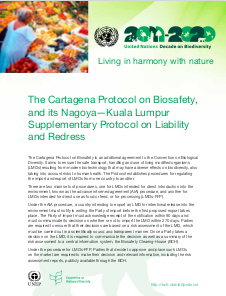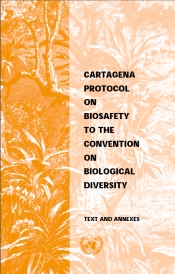Cartagena Protocol
Het Protocol van Cartagena inzake bioveiligheid bij het Verdrag inzake biologische diversiteit is een internationale overeenkomst die tot doel heeft te zorgen voor de veilige behandeling, het veilige vervoer en het veilige gebruik van veranderde levende organismen (VLO's) die het resultaat zijn van moderne biotechnologie en die nadelige gevolgen kunnen hebben voor de biologische diversiteit, waarbij ook rekening wordt gehouden met de risico's voor de gezondheid van de mens. Het werd aangenomen op 29 januari 2000 en trad in werking op 11 september 2003.
Op 29 januari 2000 heeft de Conferentie van de Partijen bij het Verdrag inzake Biologische Diversiteit een aanvullende overeenkomst bij het Verdrag aangenomen die bekend staat als het Protocol van Cartagena inzake bioveiligheid. Het Protocol heeft tot doel de biologische diversiteit te beschermen tegen de potentiële risico's van veranderde levende organismen die het resultaat zijn van moderne biotechnologie. Het stelt een procedure vast voor voorafgaande geïnformeerde instemming (AIA) om ervoor te zorgen dat landen de informatie krijgen die ze nodig hebben om geïnformeerde beslissingen te nemen voordat ze instemmen met de invoer van dergelijke organismen op hun grondgebied. Het Protocol bevat een verwijzing naar een voorzorgsbenadering en herbevestigt het voorzorgsbeginsel 15 van de Verklaring van Rio inzake milieu en ontwikkeling. Het protocol richt ook een uitwisselingscentrum voor bioveiligheid op om de uitwisseling van informatie over veranderde levende organismen te vergemakkelijken en landen te helpen bij de implementatie van het protocol.

Contact
Nationaal knooppunt Protocol van Cartagena
Federale Overheidsdienst Volksgezondheid, Veiligheid van de Voedselketen en Leefmilieu Directoraat-generaal Leefmilieu (DG-EM (Environnement/Milieu))
De heer Jens Warrie : jens.warrie@health.fgov.be

